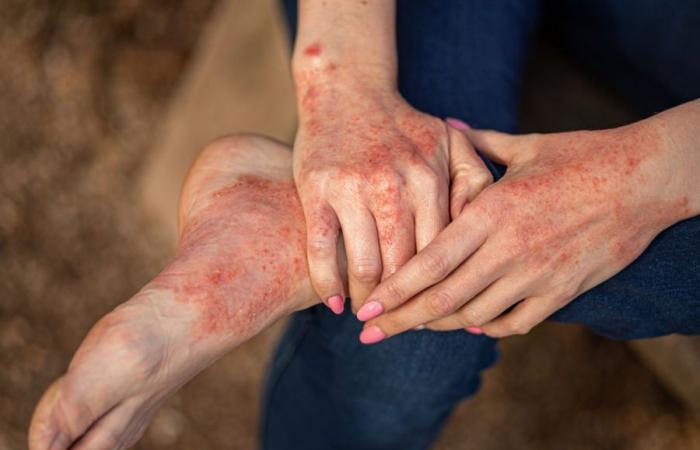In recent years, the connection between air pollution, climate change and human health has become increasingly evident. A new study, published in Allergy by American scientists, provides further evidence on how these factors can influence the spread and severity of atopic dermatitis, a common skin condition that affects millions of people in Italy and around the world. What is the correlation between pollution, climate change and Atopic Dermatitis? Let’s find out in this article.
The Research: Impact of Pollution and Climate Risks on Atopic Dermatitis
Researchers have carefully examined how different climate variables, including warming, heat waves, droughts, and urbanization, can influence atopic dermatitis. Previous studies have already highlighted the link between eczema and air pollution, but this research has further explored the role of factors such as fires and urbanization in worsening the skin condition. According to Maria Concetta Fargnoli, vice president of the Italian Society of Dermatology and Sexually Transmitted Diseases (SIDeMaST), climate change can alter the skin barrier, increase inflammation, and promote microbial imbalance, thus contributing to the development and worsening of atopic dermatitis.
Additional Risk Factors: Allergens, Ultraviolet Radiation and Smoking
In addition to climate risks, other factors such as allergens, ultraviolet radiation, and smoke can interact directly with the skin, exacerbating eczema. According to Antonio Costanzo, director of Dermatology at the Humanitas Clinical Institute in Milan, the presence of environmental allergens can penetrate the compromised skin barrier, while ultraviolet radiation and smoke can aggravate inflammation and itching. These factors can be particularly problematic in areas with extreme climates or unfavorable environmental conditions.
Clinical Manifestations and Management of Atopic Dermatitis
Atopic dermatitis presents with dry, itchy skin and red patches that may develop into fluid-filled blisters. The most commonly affected areas include the face, neck, elbow and knee creases, hands and feet. The condition can be triggered by stimuli such as sweat, rubbing and contact with irritants. Management of atopic dermatitis requires constant attention and a combination of topical and systemic therapies. It is essential to use emollient creams to repair the compromised skin barrier and avoid situations that can aggravate dry skin.
Awareness and Access to Care Campaign
To help patients cope with atopic dermatitis, SIDeMaST has launched the awareness campaign “Dalla parte della tua pelle,” which offers free dermatological consultations in hospital and university centers throughout Italy. Early diagnosis and treatment are crucial to managing the condition and improving patients’ quality of life. Treatment options vary based on the severity of the disease and may include anti-inflammatory creams, systemic therapies, and biologics.
Statistics and Future Prospects
Statistics indicate an increase in cases of atopic dermatitis worldwide, with a significant impact on the health and quality of life of patients. It is essential to continue studying and understanding the factors that contribute to the pathology to develop new prevention and treatment strategies. With better awareness and access to care, it is possible to significantly improve the lives of people affected by atopic dermatitis.
Read also:
- https://www.corriere.it/
- Atopic Dermatitis: A Complete Guide to Knowledge
- Microbiota and atopic dermatitis






